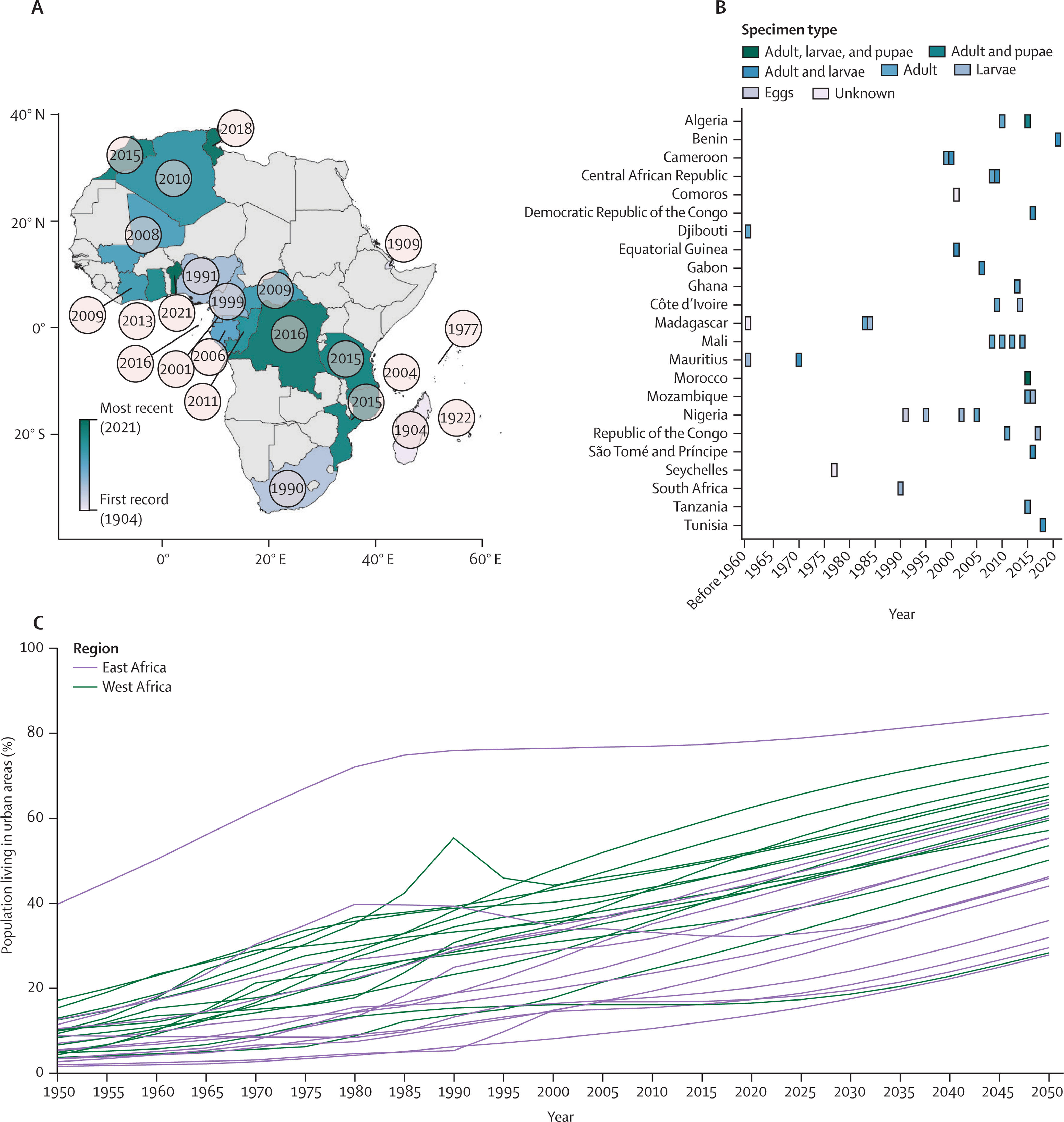
In March 2022, WHO launched the Global Arbovirus Initiative, a strategic plan to tackle re-emerging arboviruses with epidemic potential. Three arboviruses: Rift Valley fever virus, chikungunya virus, and Zika virus, are also listed on the WHO Priority Blueprint, targeting them for focused research and development because of their geographical expansion and propensity to cause epidemics.
Alongside these re-emerging arboviruses, at least 33 other mosquito-borne viruses are present across Africa. Liverpool School of Tropical Medicine researchers, alongside collaborators in Tanzania and Uganda, have published a Viewpoint in the Lancet Global Health. The Viewpoint, authored by Joshua Longbottom, Abel W Walekhwa, Victor Mwingira, Oliver Kijanga, Furaha Mramba, and Jennifer Lord, calls for better collaboration between countries to enable researchers to monitor, map, and gather data relating to a key vector of these viruses, Aedes albopictus, limiting its potential to spread and transmit endemic viruses.
Post-doctoral Research Associate, Joshua Longbottom from the Department of Vector Biology, said: “We argue in this Viewpoint that the epidemiology of at least five arboviruses is already changing in Africa, likely due to urbanisation and the spread of invasive Aedes mosquitoes. Our article calls for increased and coordinated surveillance of Ae. albopictus and associated arboviral infections across Africa. If national governments fail to rapidly respond to the invasion of this species, we could miss the window of opportunity to prevent associated diseases spreading to places they haven’t been reported so far.”
The Viewpoint highlights that the geographical distribution of the mosquito Ae. albopictus is expanding across Africa, likely in response to changing climate, increased urbanicity and an increasingly connected world. Ae. albopictus is an important vector as it is responsible for the spread of viruses that negatively impact public health. Failure to respond to species invasion, could see the increased transmission of Aedes-associated pathogens including dengue, chikungunya, and Rift Valley fever viruses.
The authors of the Viewpoint advocate for a collaborative, cross-country approach to enable better surveillance, prevention, and control of this vector across Africa. Through systematic review of the published literature, the authors show that Ae. albopictus has become established in eight countries across central, north, and east Africa over the last decade, with several others being climatically suitable. The authors relate this spread, in part, to urbanisation, using data from the World Bank.
By leveraging numerous highly cited estimates of Aedes distribution, the team has produced an open-source consensus map for Ae. albopictus suitability in Africa. Using this consensus map and information on road-based transport routes, they propose priority areas for longitudinal surveillance. The authors discuss how information on species detection may be shared between countries and suggest that a web-app would help facilitate this. A prototype web-app can be accessed via LSTM’s web pages, here: Aedes distribution maps | LSTM (lstmed.ac.uk)
The main take-home from the piece is the need for multi-country collaboration to improve prevention, surveillance, and monitoring of this species across Africa.